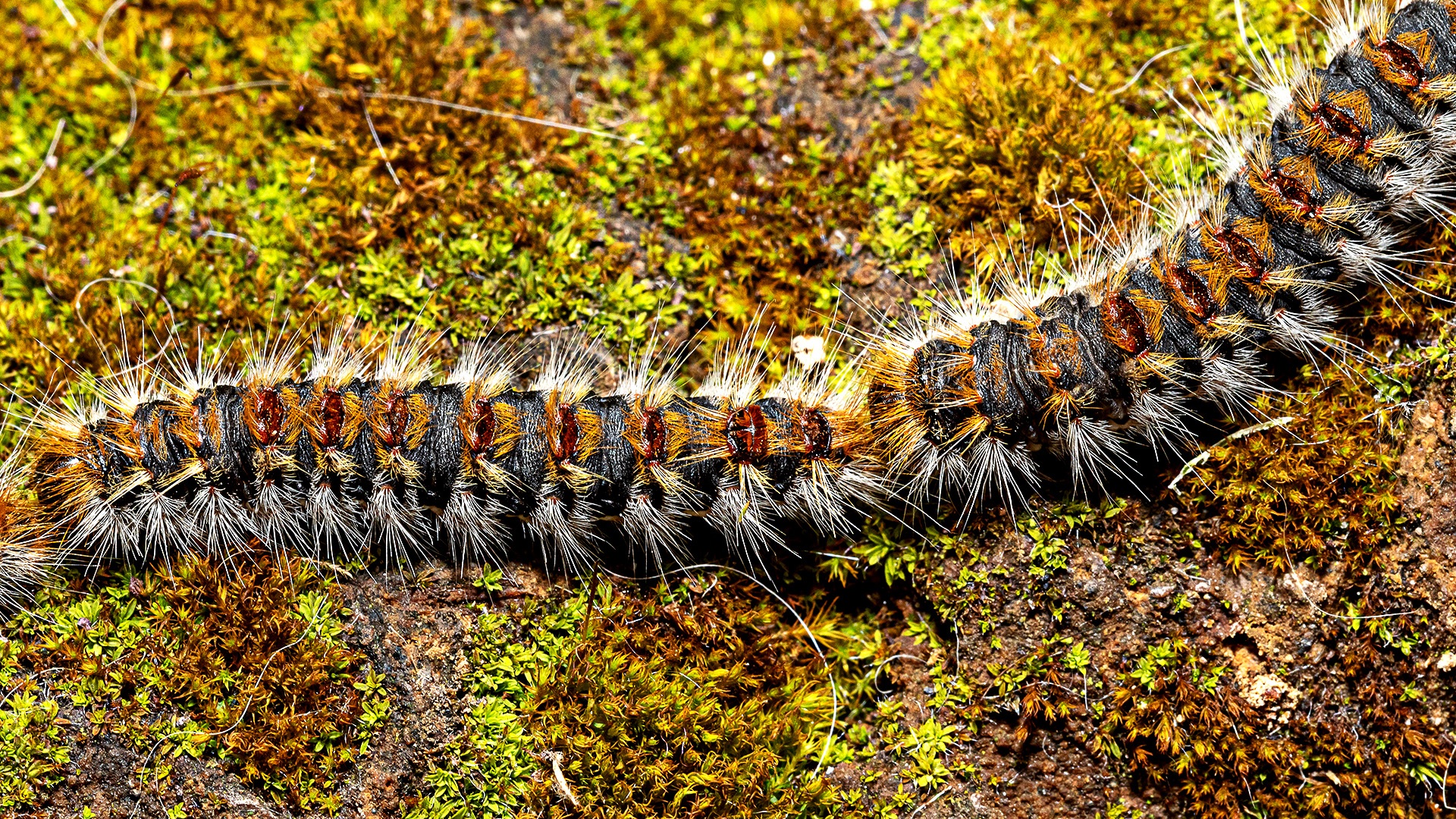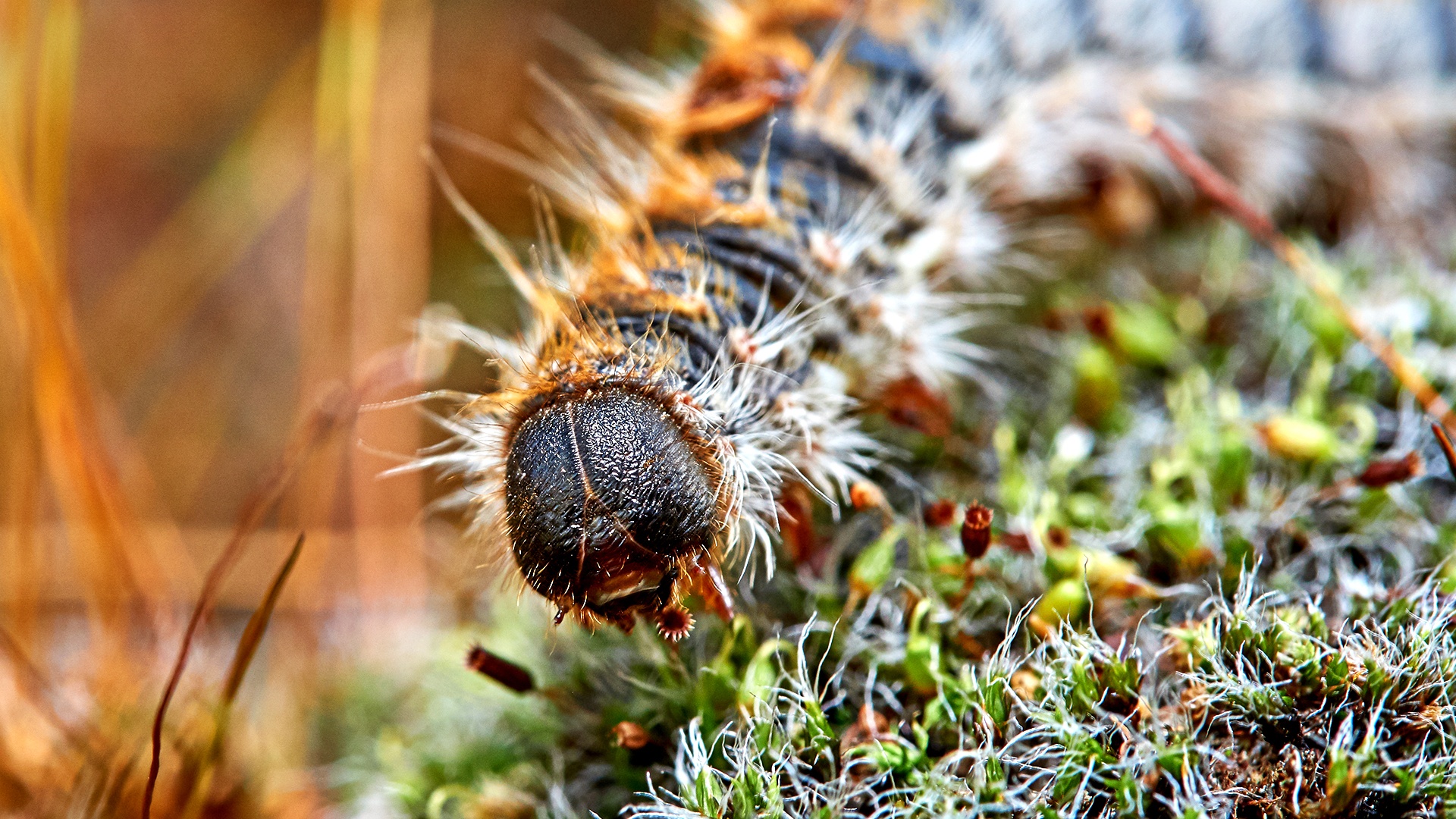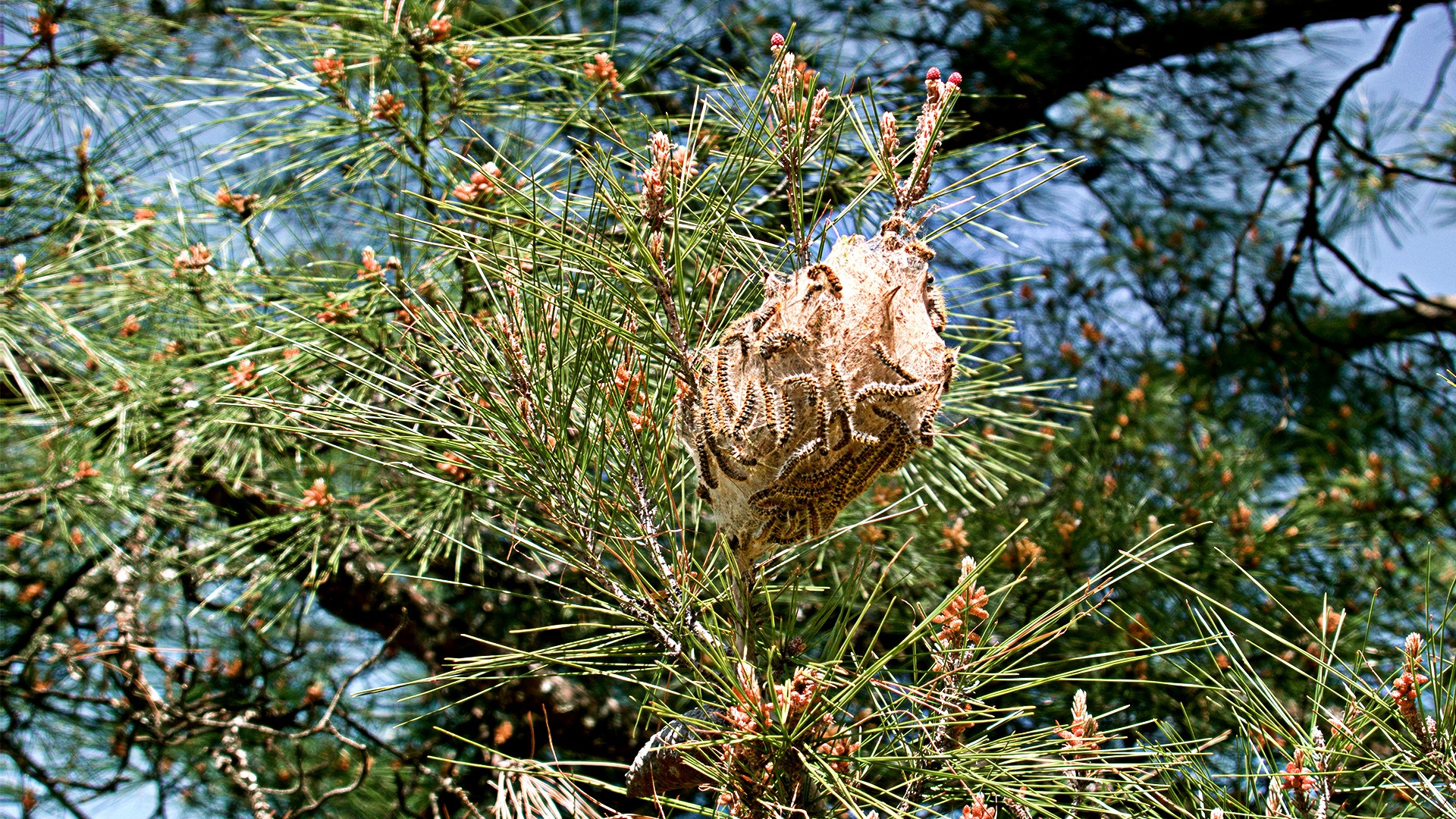It is called pine-caterpillar (Thaumetopoea pityocampa) and may seem harmless but behind this friendly look lies danger both for humans and animals and, of course, for the trees that it defoliates: it is an increasingly common pest in our country as a result of climate change.
Also known as pine processionary or just processionary, the pine caterpillar belongs to the moth family (Lepidoptera species) and is also a nocturnal animal. It is a defoliating insect, like the eucalyptus snout-beetle (Gonipterus platensis), and feeds on the leaves of the trees he attaches to, in particular the maritime pine (Pinus pinaster), the stone pine (Pinus pinea) and the scots pine (Pinus sylvestris), as well as the Aleppo pine (Pinus halepensis), the Atlas cedar (Cedrus atlantica), the Himalayan cedar (Cedrus deodora) or the European Larches (Larix decidua), among other species of the Pinaceae family (the pine family).
Although the maritime pine is a resistant species, it is affected by diseases and pests that weaken it, and the pine caterpillar is one of them. It attacks this species as it feeds on its e needles. Generally, the damage is not serious, only a reduction in tree growth and weakening which may cause a breakdown in timber production. However, severe defoliation keeps weakening the tree, especially if it is young, and if the infestation is severe felling may be necessary.
The pine caterpillar does not survive in cold climates. Its distribution was limited originally to the Mediterranean basin and part of the Middle East, but the caterpillar has been spreading increasingly to the north, stopping in the United Kingdom Ireland and Scandinavian countries, where the climate is cold and so therefore there is no habitat for this species. It can be spotted also in North Africa and Australia (where it is presumed to have been taken accidentally to, thus affecting Australian Pinus plantations).
This is a species with an annual biological cycle as a rule which goes through four phases with variable duration and depending on the weather conditions:
1st stage | Egg | July to mid-October
The female lays between 70 and 350 eggs and hatching occurs 30 to 45 days later. These eggs, measuring between four and five centimetres in length, are, due to the scales of the female anal tuft that cover them, similar to pine shoots. The eggs are laid in a silk nest, built on top of the infested trees during winter. When they hatch, the small caterpillars feed on the tree needles.
2nd phase | Caterpillar | September to mid-April
The caterpillar goes through five growth stages. After the third stage, the stinging hairs appear, but the caterpillar defensive apparatus is only fully developed in the fifth stage – it contains around 120 thousand stinging hairs, located between the first and eighth abdominal segments. That’s also when they leave their nests and start their “procession”. They are about four centimetres long and they have a black head and green body, which changes when the reddish dorsal hairs start growing, covering all segments of the body symmetrically.
3rd phase | Pupa or chrysalis (cocoon) | February to June
This phase, called pupation, occurs in the soil, between 15 to 20 centimetres deep. In cold and mild climates, caterpillars look for sunny areas and, in warmer climates, they bury themselves near the trees where they made their nest. A white two-centimetre long silk cocoon surrounds the pupae. At this point, they have a yellowish colour which then changes to reddish-brown.
4th phase | Adult insect (butterfly) | June to August
The butterfly emerges from the ground making its way with the corneal plate of its head. Adults are exclusively nocturnal and live only four days. The fertilization of females occurs at this stage occurs as they build a nest in the canopy of trees to lay the eggs.
The duration of these phases depends largely on the weather conditions. If unfavourable, they can live up to three years as pupae.





